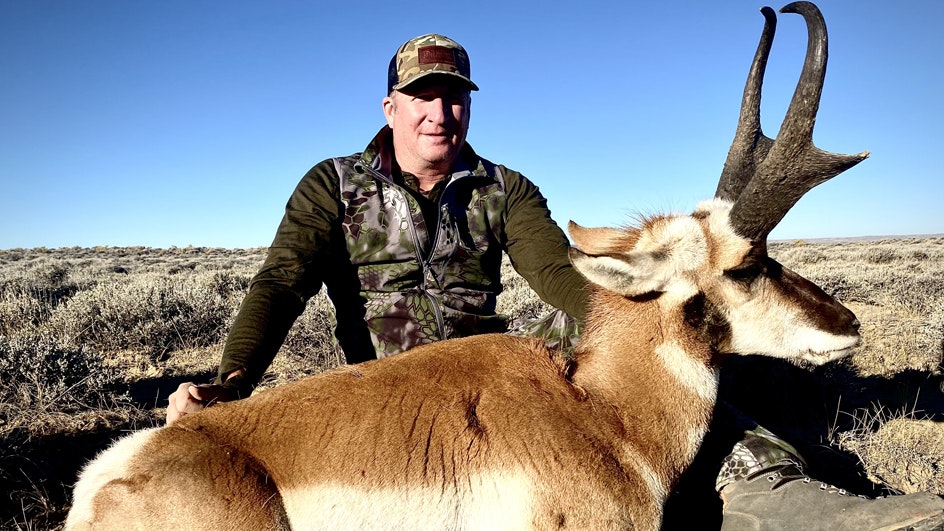Freezing, starvation, drought, habitat loss and even brain worms.
Deer across the Rockies and northern plains just can’t seem to catch a break, and massive cuts in hunting tags for fall 2023 across several states reflect that.
“Our mule deer buck harvest last fall was the lowest since 1981,” Nebraska Game and Parks spokesman Luke Meduna told Cowboy State Daily. “The whitetail buck harvest was the lowest since 1994.”
Nebraska cut roughly 8,300 deer tags for this fall, mostly for mule deer, he said.
Mule Deer ‘Struggling Everywhere’
“We did have a harder winter this year than we’ve had in a number of years (and many deer died as a result),” Meduna said.
And ongoing drought and habitat loss have also hurt deer numbers in Nebraska, he said. On top of everything else, brain worms have been killing muleys.
“We’re also on the eastern edge of mule deer habitat, and a couple of years ago we had an outbreak of a brain worm that kills mule deer but doesn’t seem to affect whitetails,” he added. “The story of mule deer is that they’re struggling everywhere.”
That’s certainly been the case in Wyoming.
One of the Cowboy State’s prize mule deer herds in the Wyoming Range may have lost half of its animals to the brutal winter. On the herd’s winter range just outside of La Barge, muley carcasses littered the landscape earlier this month.
Wyoming cut about 4,400 deer tags, as well as more than 10,000 antelope tags, mostly because of winterkill.
Hunting Tag Hack And Slash In Utah, Colorado
Utah and Colorado also suffered heavy losses, spokespeople for wildlife agencies in those states told Cowboy State Daily.
In Utah, deer were caught between the hammer of ongoing drought in some places and an anvil of massive snowfall in others.
“Winterkill definitely played a part” in that state cutting more than 8,400 deer tags, Utah Division of Wildlife Resources spokeswoman Faith Heaton Jolley said.
It was especially bad in northern parts of Utah adjacent to Wyoming.
The bulk of the cuts — 7,500 tags, a 31% decrease from last fall — were in northern Utah.
“In southern Utah, our deer herd are doing very well,” Jolley said. “We actually proposed some tag increases in some of those hunt areas.”
In Colorado, winterkill was the “main culprit” in a 33% reduction in deer tags, or 12,800 cut, said Colorado Parks and Wildlife spokesman Joey Livingston.
Northwest Colorado was hardest hit by winterkill, he said.
Colorado also opted to cut 15,400 elk licenses (12%) and 3,500 pronghorn tags (15%), also mostly because of winterkill.
Montana, Idaho Fare Better
Montana is sure to have some hunting license cuts this year, probably mostly for deer, but the numbers have yet to be determined, Montana Fish, Wildlife and Parks spokesman Greg Lemon told Cowboy State Daily.
Like Nebraska, Montana has been struggling with drought, and that has hurt mule deer numbers there, he said. There also was some winterkill, but nothing on the scale of the swaths of death across central Wyoming and northwest Colorado.
“In some places it (winterkill) was worse than in others,” he said. “Its not a widespread, population-level issue.”
Montana’s game commission will meet next week to consider some adjustments to hunting tag allocations, and those will likely be finalized in August, Lemon said.
Idaho announced only minimal cuts, roughly 200 deer tags.
Whitetails Up, Muleys Down
Though not as iconic to Wyoming as mule deer, whitetails are still popular with some hunters here.
Even after the brutal winter, Wyoming was still reporting plentiful whitetail in many parts of the state. They tend to congregate along river bottoms and in farmland where forage was more available than on the open range occupied by mule deer and antelope.
It’s a similar situation in Colorado, Livingston said.
“Colorado's whitetail populations are primarily in the eastern half of the state and were mostly unaffected by these license reductions,” he said. “CPW doesn't have many mule deer only licenses. Our general deer license allows you to take mule deer of whitetail, and our whitetail only license are only for the eastern half of the state.”
Predators Play A Part
Nebraska recently had a surge in its coyote population and likely lost some deer fawns as a result, Meduna said.
Loss to coyotes and other predators has also been a hot topic in Wyoming. Some have expressed worry over predators hammering already-decimated game herds, while others argue that the carnivores shouldn’t be blamed for such losses.
The effects of wolves on big game herds have also been debated for years in Wyoming, Montana and Idaho.
That debate is coming to Colorado, as that states struggles to launch its own wolf reintroduction program.
Wolves are also showing up in Utah, likely crossing over from Wyoming, Jolley said, though Utah doesn’t have established packs.
“We have reports of wolf sightings, but no evidence of any breeding pairs settling here yet,” she said.
Mark Heinz can be reached at Mark@CowboyStateDaily.com





